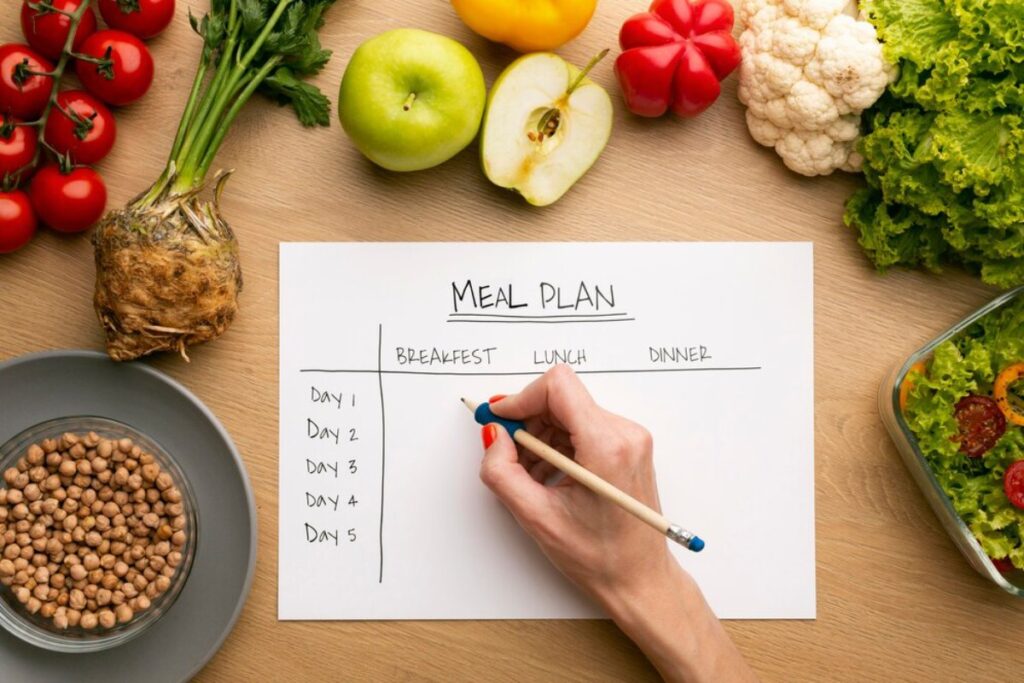The Parenting Blog

Weekly Meal Planning on a Budget: Tips and Tricks
Managing your family’s meals without blowing your grocery budget might seem like a daunting task, but with the right strategies, it can actually be simple—and even fun. Whether you’re feeding one or a full household, meal planning can help you save time, reduce food waste, and unlock substantial savings at the checkout line.
In this post, we’ll walk you through actionable tips and tricks for creating budget-friendly meals, maximising pantry staples, and implementing smart grocery savings strategies that can make a real difference in your weekly food costs.
Why Weekly Meal Planning Matters
Saves Time and Reduces Daily Stress
Knowing exactly what you’ll cook each night removes the daily “What’s for dinner?” stress. It also cuts down on last-minute takeout orders that can quickly derail your food budget.
Prevents Food Waste
By buying only what you need for planned meals, you reduce the likelihood of forgotten ingredients rotting in the fridge. That’s better for your wallet and the planet.
Supports Healthier Eating Habits
When meals are planned in advance, you’re more likely to prepare balanced, nutritious dishes rather than reaching for convenience foods high in sodium, fat, or sugar.
Getting Started with Meal Planning
Step 1: Set a Budget
Before you plan your meals, determine how much you’re willing to spend for the week. This will help you choose recipes and ingredients that fit your financial goals.
Step 2: Check What You Already Have
Take inventory of your pantry, fridge, and freezer. Base your meal plan on ingredients you already own to stretch your dollar further.

Step 3: Plan Around Sales and Coupons
Review your local grocery store flyers and digital apps for weekly sales. Plan your meals around discounted proteins, produce, and pantry staples.
Step 4: Choose Simple, Flexible Recipes
Stick to meals that are easy to prepare and that share overlapping ingredients. Recipes that allow you to repurpose leftovers can also provide more bang for your buck.
Budget-Friendly Meal Planning Tips
Cook Once, Eat Twice (or More)
Make double batches of meals like soups, chili, casseroles, or stir-fries. Freeze the extras or use them for lunch the next day.
Embrace “Meatless Mondays”
Meat is often the most expensive item on your shopping list. Swapping it for plant-based proteins like beans, lentils, or tofu once or twice a week can result in major savings.
Make the Most of Leftovers
Turn roast chicken into chicken salad or leftover rice into fried rice. Reimagining leftovers keeps meals exciting and minimises waste.
Use Theme Nights to Simplify Planning
Creating a rotating schedule (e.g., pasta on Mondays, tacos on Tuesdays, slow cooker meals on Wednesdays) brings structure to your planning and narrows your ingredient list.
Shop Seasonally and Locally
Seasonal produce is typically cheaper and fresher. Visit farmer’s markets or discount produce stores to find great deals.
Opt for Store Brands
Store-brand products are often significantly cheaper than name brands and offer comparable quality for everyday staples like rice, pasta, and canned goods.
Grocery Savings Strategies That Work
Use a Grocery List—And Stick to It
Impulse purchases can blow your budget. Create a list based on your meal plan and commit to sticking to it. Bonus points if you organise it by store section!

Buy in Bulk (Smartly)
Items like rice, beans, oats, flour, and spices are often cheaper per unit when bought in bulk. Just make sure you’ll use them before they expire.
Use Cashback and Coupon Apps
Apps like Ibotta, Rakuten, Fetch Rewards, or your grocery store’s own app can offer cashback or digital coupons for items you already buy.
Shop with a calculator
As you place items in your cart, tally up the cost to stay within budget. This makes it easier to avoid surprises at the register.
Avoid Shopping When You’re Hungry
A well-known but often ignored trick—shopping hungry increases the chance of impulse buys. Eat before you go!
Sample Budget-Friendly Weekly Meal Plan
Here’s a simple plan based on affordable, accessible ingredients:
Monday
- Lentil Soup with Garlic Bread
Tuesday
- Taco Bowls with Rice, Black Beans, Corn, and Salsa
Wednesday
- Pasta with Homemade Marinara and Frozen Veggies
Thursday
- Stir-fried rice with Leftover Veggies and Egg
Friday
- Baked Potatoes with Toppings Bar (Cheese, Broccoli, Beans)
Saturday
- Sheet Pan Chicken and Roasted Vegetables
Sunday
- DIY Pizza Night with Store-Bought Dough and Toppings
This plan uses overlapping ingredients like rice, beans, and vegetables to keep costs low and prep time short.

Tools to Help You Succeed
Meal Planning Apps
- Mealime – Customizable weekly plans based on your dietary needs and budget
- Plan to Eat – Great for saving recipes and generating shopping lists
- Paprika – Combines meal planning, grocery lists, and recipe management.
- Yummly – Suggests recipes based on ingredients you already have
Pantry and Freezer Inventory Sheets
Track what you already own so you can avoid overbuying and waste. A simple spreadsheet or printable checklist works wonders.
Final Thoughts: Small Steps, Big Savings
Meal planning doesn’t have to be complex to be effective. Even a few minutes of planning at the beginning of the week can save money and less stress around mealtime. With a bit of organisation, a dash of creativity, and these budget-friendly meals and grocery savings strategies, you can eat well while spending less.
Start simple, stay consistent, and remember—every meal you plan ahead is a win for your wallet.









